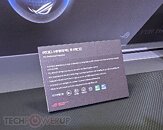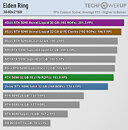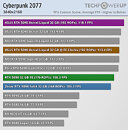
ASUS Unveils ROG Astral GeForce RTX 5090 Real Gold Edition with 5 kg of Pure Gold
At Bilibili World 2025, ASUS introduced one-of-a-kind ROG Astral GeForce RTX 5090 Real Gold Edition, a GPU with literal real-world gold. Weighing in at 7.24 kg the card incorporates 5 kg of 24‑karat gold across its frame, backplate, and outer shell, giving its raw materials alone a value exceeding half a million US Dollars. ASUS China general manager Tony Yu, known online as "Uncle Tony," revealed the piece alongside content‑creator partner "Talented Cai Qian." According to ITHome, the sand‑mold casting process produced an uneven, almost molten texture on the calligraphy and cooling fins, clearly distinguishing this one‑off prototype from any mass‑produced design.
This solid‑gold edition follows the earlier Dhahab OC line, which featured only a thin layer of precious metal, and it now stands as a monument to luxury. At current bullion prices, the value of the gold alone surpasses that of a fully loaded AI server. ASUS has not confirmed the card's next destination, though it may be auctioned like previous limited editions signed by NVIDIA CEO Jensen Huang, with proceeds benefiting children's hospitals. With gamers usually focusing on performance per watt, they will look elsewhere, as this is certainly not a value buy. The underlying RTX 5090D silicon remains unchanged, and the gilded cooler is too large for most standard chassis, meaning that only collectors will prize the GPU for its one-of-a-kind build.
This solid‑gold edition follows the earlier Dhahab OC line, which featured only a thin layer of precious metal, and it now stands as a monument to luxury. At current bullion prices, the value of the gold alone surpasses that of a fully loaded AI server. ASUS has not confirmed the card's next destination, though it may be auctioned like previous limited editions signed by NVIDIA CEO Jensen Huang, with proceeds benefiting children's hospitals. With gamers usually focusing on performance per watt, they will look elsewhere, as this is certainly not a value buy. The underlying RTX 5090D silicon remains unchanged, and the gilded cooler is too large for most standard chassis, meaning that only collectors will prize the GPU for its one-of-a-kind build.














































































